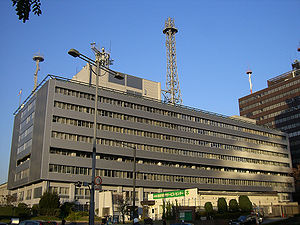 Image via WikipediaSENDAI, March 13 (PNA/Kyodo) -- Japan continued to grapple Sunday with widespread damage from its biggest recorded earthquake and massive tsunami that hit northeastern and eastern regions two days ago, with the number of reported victims topping 2,000 and a crisis escalating at one of two affected nuclear plants.
Image via WikipediaSENDAI, March 13 (PNA/Kyodo) -- Japan continued to grapple Sunday with widespread damage from its biggest recorded earthquake and massive tsunami that hit northeastern and eastern regions two days ago, with the number of reported victims topping 2,000 and a crisis escalating at one of two affected nuclear plants.The magnitude of the devastating quake was revised upward the same day from 8.8 to 9.0, making it one of the largest recorded in the world, the Japan Meteorological Agency said.
The number of people who had died or remained unaccounted for exceeded 2,000, police said, while the official death toll neared 800.
In Fukushima Prefecture alone, 1,167 were unaccounted for and well over 600 corpses had been found in Miyagi and Iwate prefectures on the Pacific coast.
Local governments have been unable to contact tens of thousands of people, and at least 20,820 buildings have been fully or partially damaged in quake-hit areas, while more than 300,000 people have been evacuated in six prefectures, according to local and central government tallies.
Some 180,000 people newly began to evacuate within a 20-kilometer radius from the Fukushima No. 1 nuclear plant a day after one of its reactors partially melted Saturday, while at least 22 people are known to have been exposed to radiation near the plant.
Tokyo Electric Power Co. notified the government's nuclear safety agency in the morning that the radiation level at the plant exceeded the legal limit, after the sixth reactor at its two Fukushima plants was earlier in the day reported to have lost its cooling functions.
Prime Minister Naoto Kan issued an instruction to boost the number of Self-Defense Forces personnel sent to quake-hit areas to 100,000, one of the largest ever for an SDF operation, Defense Minister Toshimi Kitazaw a said.
"I ask for utmost efforts to save the lives of as many people as possible," Kan said at a morning meeting of the government's emergency disaster headquarters. "We will put all-out efforts into rescuing people who have been isolated."
The SDF has dispatched 65,000 personnel by Saturday night, but will increase the number to 100,000 in one or two days, Kitazawa told reporters.
In Miyagi, about 200 dead bodies were newly found in the city of Higashimatsushima, the National Police Agency said.
About 4,400 people remained isolated as of Saturday night in schools, hospitals and inns in the tsunami-swamped town of Onagawa and neighboring Ishinomaki city, as well as at the Onagawa nuclear plant where they had been evacuated to, Miyagi officials said.
In Minamisanriku, about 10,000 people, over half the town's population, remain unaccounted for.
In Iwate Prefecture, north of Miyagi, many corpses were found Sunday morning under the rubble in Rikuzentakata. About 5,000 houses in the city had been submerged by the quake-triggered tsunami, and the city office has confirmed that only 5,900 of its population of about 23,000 had taken shelter.
It also has been unable to communicate with the mayor and officials in Otsuchi after the town office was swept away by a tsunami while the mayor and town officials were apparently inside the building. A nursing home accommodating 30 elderly people was also washed away in Ofunato city.
The Fukushima prefectural government said it was still unable to contact 1,167 residents, including 918 in the town of Namie, boosting the tally of those unaccounted for in its latest data.
Helicopters from the Maritime Self-Defense Force sent to check the extent of damage spotted wood fires at seven places in Miyako city early Sunday, the Defense Agency said.
Communication failures also were found to have extended further. Nippon Telegraph and Telephone East Corp. said 475,400 fiber-optic services were disconnected as of 6 a.m., up 76,500 from 8 p.m. Saturday, in addition to 879,500 subscribed phone lines that remained out of service in areas centering on Iwate and Miyagi.
Ground SDF troops, meanwhile, rescued about 5,800 people in the Miyagi town of Kesennuma and its vicinity, the Defense Ministry said.
A total of 69 governments from abroad and five international institutions had offered assistance to Japan as of 9 a.m., the Foreign Ministry said.
The weather agency downgraded its tsunami warning to an advisory the same day for the Pacific side of the Tohoku region in northeastern Japan, meaning the entire country was no longer subject to any higher-level tsunami warnings.
The government adopted a decree late Saturday designating the quake a serious disaster eligible for increased state subsidies for reconstruction.






No comments:
Post a Comment